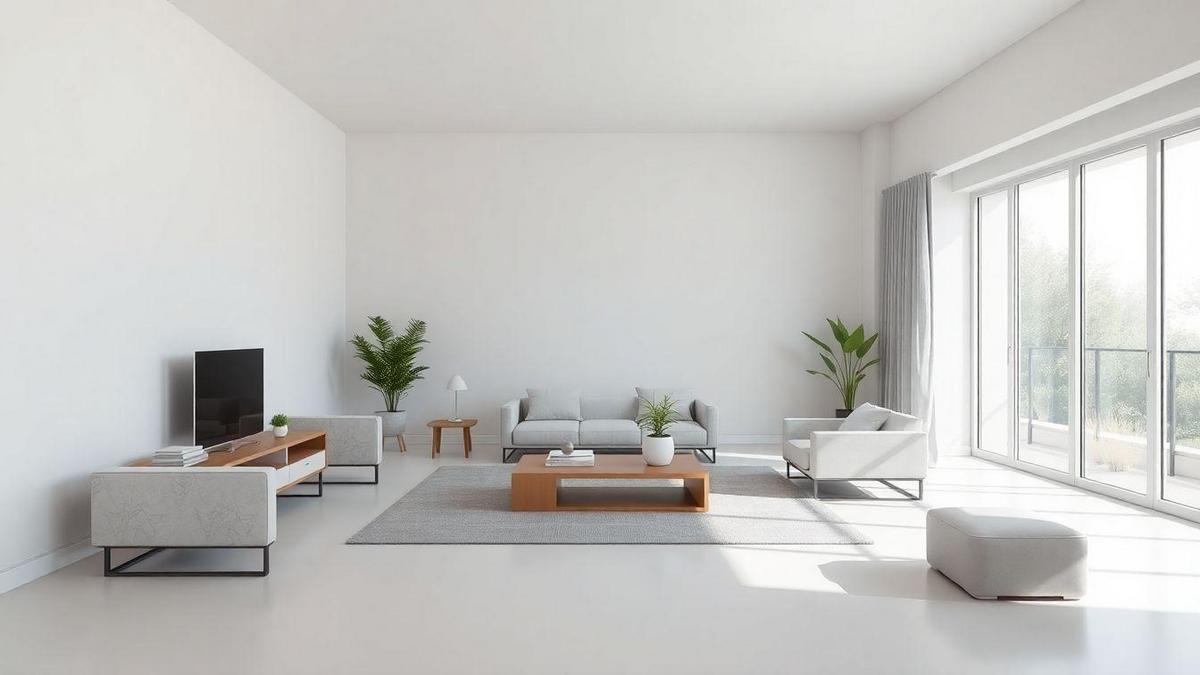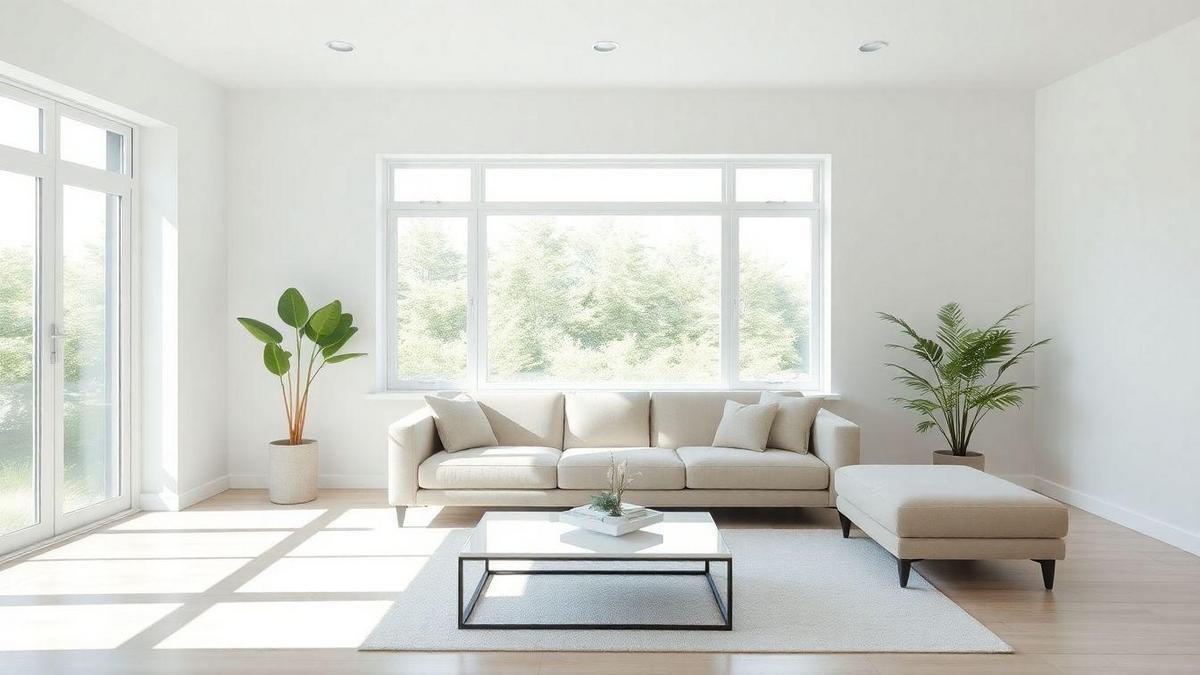Do minimalist designs still work in 2025? Absolutely! In this article, we’re diving into the rise of minimalist design trends and what makes this style so popular. You’ll explore the key features that define minimalist aesthetics and see how simplicity enhances user engagement. We’ll showcase real-world examples of successful minimalist websites and discuss how brands adapt to stay relevant. Plus, you’ll learn about the impact of minimalism on sustainability and how to create a user-friendly minimalist site. Let’s get started on this exciting journey into the world of minimalism!

The Rise of Minimalist Design Trends in 2025
What Makes Minimalism Popular?
Minimalism is taking the spotlight in 2025, and you might wonder why. It’s all about keeping things simple. In a world filled with noise and distractions, minimalist design offers a breath of fresh air. People are drawn to clean lines and open spaces that make websites easy to navigate. This trend appeals to those who want to focus on what truly matters without unnecessary clutter.
Key Features of Minimalist Design Trends 2025
So, what should you look for in minimalist designs this year? Here are some key features:
| Feature | Description |
|---|---|
| Clean Layouts | Simple, organized layouts that guide your eyes. |
| Limited Color Palette | A few colors that work well together for a calming effect. |
| Plenty of White Space | Space that allows elements to breathe, making content easier to digest. |
| Bold Typography | Clear fonts that stand out and grab attention. |
These features help create a user-friendly experience. They allow you to find what you need without getting lost in a sea of information.
The Role of Simplicity in User Engagement
Simplicity plays a huge role in keeping users engaged. When you visit a website that’s cluttered, you often feel overwhelmed. But with minimalist design, it’s like walking into a tidy room. You can breathe, think, and focus.
For example, think about your favorite online store. If it’s easy to find products and the checkout process is smooth, you’re likely to return. That’s the power of simplicity! It keeps users coming back for more.
Effectiveness of Minimalism in Web Design
How Minimalist Designs Improve User Experience
Minimalist designs are all about simplicity. By stripping away the clutter, you can make your website easier to navigate. This helps users find what they need quickly. Think of it like walking into a clean room versus a messy one. Which one feels more inviting? Exactly! A tidy, minimalist layout makes it easier for your visitors to focus on what matters.
Here are some ways minimalist designs boost user experience:
- Faster Load Times: With fewer elements, your website loads quicker. Users hate waiting!
- Clearer Navigation: A simple layout means users can find their way around without getting lost.
- Less Distraction: Fewer visuals mean users can focus on your content, whether it’s a blog post or a product page.
Real-World Examples of Successful Minimalist Websites
Many big brands have embraced minimalism, and they’re reaping the benefits. Here are a few examples:
| Website | Why It Works |
|---|---|
| Apple | Clean lines and ample white space highlight products. |
| A simple search bar keeps users focused on their goal. | |
| Dropbox | Straightforward design that guides users to sign up. |
These companies show that less can be more. They keep the design simple, which helps users engage better with their content.
Measuring Success with Minimalist Design Metrics
How do you know if a minimalist design is working for you? Here are some key metrics to keep an eye on:
- Bounce Rate: A lower bounce rate means users are sticking around.
- Time on Site: If users spend more time on your site, they likely find it engaging.
- Conversion Rate: More sign-ups or sales? That’s a clear sign of success!
By tracking these metrics, you can see how well your minimalist design is performing. It’s like having a scorecard for your website!

The Future of Minimalist Aesthetics
Predictions for Minimalist Aesthetic in 2025
As we look ahead to 2025, minimalist design will still hold its ground. But what can you expect? For starters, we’ll see even cleaner lines and fewer distractions. Think about it: when you visit a website, you want to find what you need quickly, right? A minimalist approach makes that possible.
Here are some predictions you might find interesting:
- Bold Typography: Expect larger, eye-catching fonts that grab your attention.
- Soft Color Palettes: Gentle colors will take center stage, creating a calming vibe.
- Smart Use of Space: More white space will help guide your eyes to what matters.
- Interactive Elements: Minimalism will embrace simple animations to keep things engaging.
How Brands Adapt to Minimalist Trends
Brands are always on the lookout for ways to connect with you. In 2025, they’ll adapt by integrating minimalist designs into their websites and marketing materials. This means they’ll focus on what truly matters—your experience.
Here’s how brands are shifting gears:
- Streamlined Navigation: Fewer clicks to get where you want to go.
- Clear Calls to Action: Buttons that stand out and tell you exactly what to do.
- Authentic Imagery: Real photos over stock images to create a genuine connection.
The Importance of Staying Relevant in Design
Staying relevant in design is crucial. If brands don’t keep up with trends, they risk losing your attention. Think about your favorite brands. Chances are, they keep their designs fresh and appealing.
In a world where you’re constantly bombarded with options, minimalist design can help brands stand out. It’s all about making it easy for you to find what you need without the clutter.
| Aspect | Minimalist Design | Traditional Design |
|---|---|---|
| Clutter | Low | High |
| User Experience | Smooth | Complicated |
| Visual Appeal | Modern | Classic |
By embracing minimalism, brands can create a more enjoyable experience for you.
User Experience and Minimalist Design
Why Users Prefer Simple Interfaces
Have you ever felt overwhelmed by a busy website? You’re not alone! Many users prefer simple interfaces. When a website is cluttered, it can feel like finding a needle in a haystack. A clean design helps you focus on what really matters. You can easily find information without distractions.
Studies show that users are more likely to stay longer on a site that is easy to use. In fact, a survey found that 94% of first impressions are design-related. So, if you want visitors to stick around, a minimalist design might be the way to go!
Enhancing Navigation with Minimalism
Imagine walking into a store with too many aisles and products. Confusing, right? That’s how users feel with complicated website navigation. Minimalist design makes navigation a breeze.
With fewer elements on the page, you can find what you need without wandering around. Clear menus and simple layouts guide you directly to your destination. This means you spend less time searching and more time enjoying what you came for!
| Feature | Minimalist Design | Complicated Design |
|---|---|---|
| Clarity | High | Low |
| Navigation Ease | Simple | Confusing |
| Load Time | Fast | Slow |
| User Retention | High | Low |
Tips for Creating a User-Friendly Minimalist Site
Ready to create your own minimalist masterpiece? Here are some quick tips to get you started:
- Limit Colors: Stick to a few colors. This keeps the site looking clean and professional.
- Use White Space: Don’t be afraid of empty space. It makes content easier to read.
- Focus on Typography: Choose simple fonts that are easy on the eyes.
- Clear Call-to-Actions: Make sure buttons are easy to find and understand. Use action words like Buy Now or Sign Up.
- Mobile-Friendly: Ensure your site looks good on both computers and phones. More people browse on mobile these days!
By following these tips, you can create a site that’s not only beautiful but also user-friendly.

Minimalist Branding Relevance in 2025
How Minimalism Shapes Brand Identity
Minimalism is all about simplicity. In 2025, brands are leaning more towards clean lines, limited colors, and straightforward messages. This approach helps you focus on what really matters—your brand’s core values. When you strip away the clutter, you allow your audience to connect with your message more easily.
Think of it like this: if you walk into a room filled with furniture, it’s hard to find a comfy chair. But if the room is neat and tidy, you can quickly spot the chair you want to sit in. That’s what minimalism does for your brand—it makes it easier for people to understand who you are and what you stand for.
Successful Brands Using Minimalist Design
Many brands are rocking the minimalist vibe. Here are a few that stand out:
| Brand | Minimalist Element | Impact on Audience |
|---|---|---|
| Apple | Simple logo and products | Trust and loyalty |
| Clean homepage | User-friendly experience | |
| Nike | Bold, simple branding | Strong emotional connection |
These brands show that a minimalist design can lead to stronger brand identity and customer loyalty. Their simple designs make it easy for you to recognize them anywhere, and that’s powerful!
The Connection Between Minimalism and Trust
Trust is key in any relationship, especially in business. Minimalist designs can help build that trust. When you see a clean and straightforward website, you’re more likely to feel safe and confident in the brand. Think about it: would you trust a cluttered site with too many flashing ads, or a sleek, easy-to-navigate one?
A minimalist approach often signals that a brand values your time and attention. It says, “We’re here to help you, not overwhelm you.” That’s why many people are drawn to minimalist designs. They feel more trustworthy and approachable.
Sustainable Minimalist Design Practices
Eco-Friendly Materials in Minimalist Designs
When you think about minimalist design, you might picture clean lines and simple colors. But did you know that you can also make it eco-friendly? Using materials that are good for the planet is a big part of this trend. Here are some materials to consider:
| Material | Description |
|---|---|
| Bamboo | Fast-growing and strong, great for furniture. |
| Recycled Metal | Helps reduce waste and is super durable. |
| Organic Cotton | Soft and sustainable for textiles. |
| Reclaimed Wood | Gives a rustic look while saving trees. |
By choosing these materials, you’re not just creating a pretty space; you’re also helping the environment. It’s like getting two birds with one stone!
The Impact of Minimalism on Sustainability
Minimalism helps you focus on what really matters. When you simplify your designs, you often use fewer resources. This means less waste and a smaller carbon footprint. It’s a win-win!
Here’s how minimalism makes a difference:
- Less is More: Fewer items mean less production and less energy used.
- Timeless Design: Simple styles don’t go out of fashion quickly, so you won’t need to replace things often.
- Easier Maintenance: With fewer items, cleaning and upkeep become a breeze.
Imagine walking into a room that feels open and fresh. That’s the beauty of minimalism! It not only looks good but also benefits the planet.
How to Implement Sustainable Minimalism in Your Projects
Ready to dive into sustainable minimalism? Here are some simple steps to get you started:
- Choose Quality Over Quantity: Invest in fewer, high-quality pieces that last longer.
- Opt for Local Materials: Support local businesses and reduce transportation emissions.
- Think Multi-Functional: Use furniture that serves more than one purpose, like a sofa bed.
- Use Natural Light: Design your space to take advantage of sunlight, reducing the need for artificial lighting.
By following these tips, you’ll create a space that’s not only stylish but also kind to the Earth. It’s all about making smart choices!

The Impact of Modern Minimalism
Trends Influencing Modern Minimalism
Modern minimalism is all about simplicity and functionality. Designers are moving away from cluttered layouts and focusing on clean lines and open spaces. Here are a few trends that are shaping this movement:
- Bold Typography: Using strong fonts grabs attention without needing extra graphics.
- Neutral Color Palettes: Soft colors create a calm environment, making it easier for visitors to focus on your content.
- White Space: This isn’t just empty space; it helps guide the eye and makes your design feel more organized.
- Functional Elements: Every part of your design should have a purpose. If it doesn’t serve a function, it’s better left out.
The Cultural Shift Towards Minimalist Living
People today are embracing a simpler lifestyle. Many are tired of being overwhelmed by stuff. This shift is impacting web design too. Here’s how:
- Less is More: Users appreciate sites that don’t bombard them with information. A clean design helps them find what they need quickly.
- Sustainability: Many are looking for eco-friendly options. Minimalist designs often use fewer resources, appealing to this mindset.
- Mental Clarity: A clutter-free environment can lead to a clearer mind. When your site is designed simply, it helps users think better.
Visual Clutter and the Minimalist Approach
Reducing Clutter for Better Focus
Have you ever opened a website and felt overwhelmed? Visual clutter can make it hard to focus on what really matters. When you strip away the distractions, your eyes can zero in on the content that counts. Think of a cluttered room. It’s tough to find what you need when everything is piled high, right? The same goes for web design. By reducing clutter, you create a space that invites your visitors to engage.
Techniques for Achieving Visual Clarity
So, how do you achieve this clarity? Here are some techniques to keep in mind:
- Use White Space: This is your best friend. It gives elements room to breathe and helps visitors focus.
- Limit Color Palettes: Stick to a few colors that complement each other. Too many colors can confuse the eye.
- Prioritize Content: Make sure your most important information stands out. Use larger fonts or bold text for headings.
- Simplify Navigation: Keep menus straightforward. If users can’t find what they need quickly, they might leave.
| Technique | Description |
|---|---|
| White Space | Allows elements to breathe for better focus. |
| Limited Colors | Reduces confusion and enhances visual appeal. |
| Content Prioritization | Highlights important information effectively. |
| Simplified Navigation | Ensures users can find their way easily. |
The Benefits of a Clutter-Free Design
A clean, minimalist design has several perks. First, it enhances user experience. When visitors can find what they need without hassle, they’re more likely to stick around. Second, it can boost loading times. Fewer elements mean faster pages, which is a win for everyone. Lastly, a clutter-free design often looks more modern and professional.
In a nutshell, embracing minimalism can lead to happier users and better engagement.

Minimalism in Interior Design 2025
How Minimalist Principles Apply to Home Design
Minimalism is all about simplicity. It focuses on keeping things clean and organized. When you apply minimalist principles to your home, you create a space that feels open and airy. Here’s how you can do it:
- Declutter: Start by removing items you don’t need. A clean space helps you think clearly and feel relaxed.
- Neutral Colors: Use light colors like white, beige, or soft gray. These shades make your space look bigger and brighter.
- Functional Furniture: Choose furniture that has a purpose. Avoid bulky pieces that take up too much space.
- Natural Light: Let the sunshine in! Big windows and light curtains can make your home feel warm and inviting.
Trends in Minimalist Interior Spaces
In 2025, minimalist design is evolving. Here are some trends you might see:
| Trend | Description |
|---|---|
| Biophilic Design | Bringing nature indoors with plants and natural materials. |
| Smart Home Features | Using technology to simplify tasks and increase comfort. |
| Multi-Functional Spaces | Creating areas that serve more than one purpose, like a living room that doubles as an office. |
These trends help you create a home that is not only beautiful but also functional.
Creating a Calm Environment with Minimalism
Creating a calm environment is a breeze with minimalism. Here are some tips:
- Soft Textures: Use soft rugs and cushions to add comfort without clutter.
- Artful Simplicity: Choose one or two pieces of art that speak to you. This adds personality without overwhelming the space.
- Zen Zones: Create a small area for relaxation, like a reading nook or meditation corner.
By focusing on these elements, you can turn your home into a peaceful retreat.
Frequently Asked Questions
Do minimalist designs still work in 2025?
Yes, they do! Simple and clean designs are timeless.
Why are minimalist designs popular?
They focus on what’s important. This makes your message clear.
Can I use colors in minimalist designs?
Absolutely! Just keep it simple. A few colors work best.
Is minimalist design good for websites?
Yes! It helps users find what they need fast.
How can I start with minimalist design?
Start by removing clutter. Use basic shapes and space to breathe.

Marina is a passionate web designer who loves creating fluid and beautiful digital experiences. She works with WordPress, Elementor, and Webflow to create fast, functional, and visually stunning websites. At ReviewWebmaster.com, she writes about tools, design trends, and practical tutorials for creators of all levels.
Types of articles she writes:
“WordPress vs. Webflow: Which is Best for Your Project?”
“How to Create a Visually Stunning Website Without Hope”
“Top Landing Page Design Trends for 2025”
Why it works:
She brings a creative, accessible, and beginner-friendly perspective to the blog, perfectly complementing Lucas’s more technical and data-driven approach.
